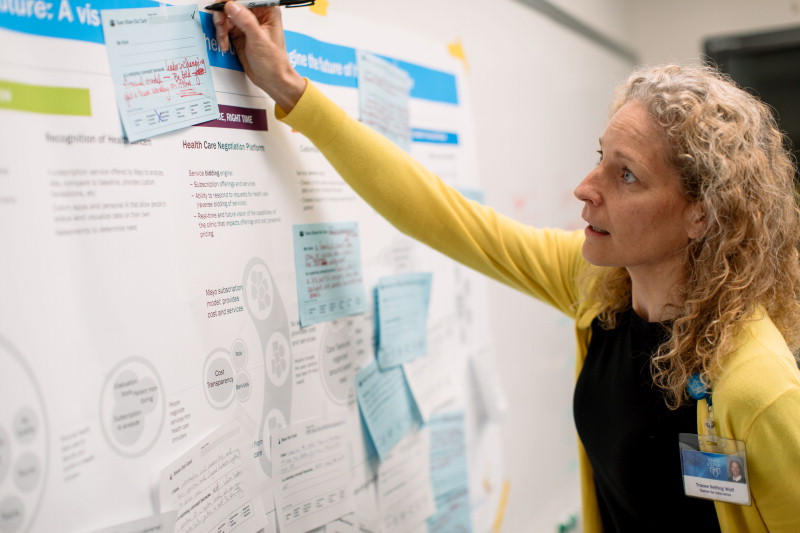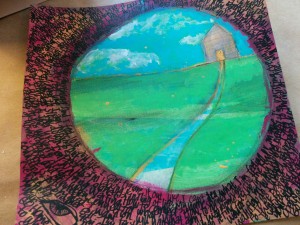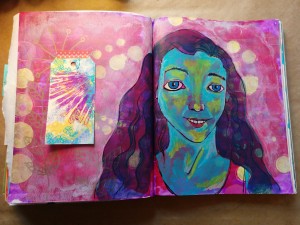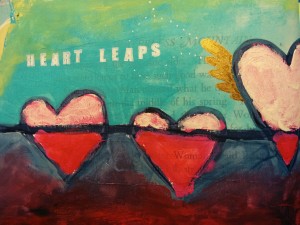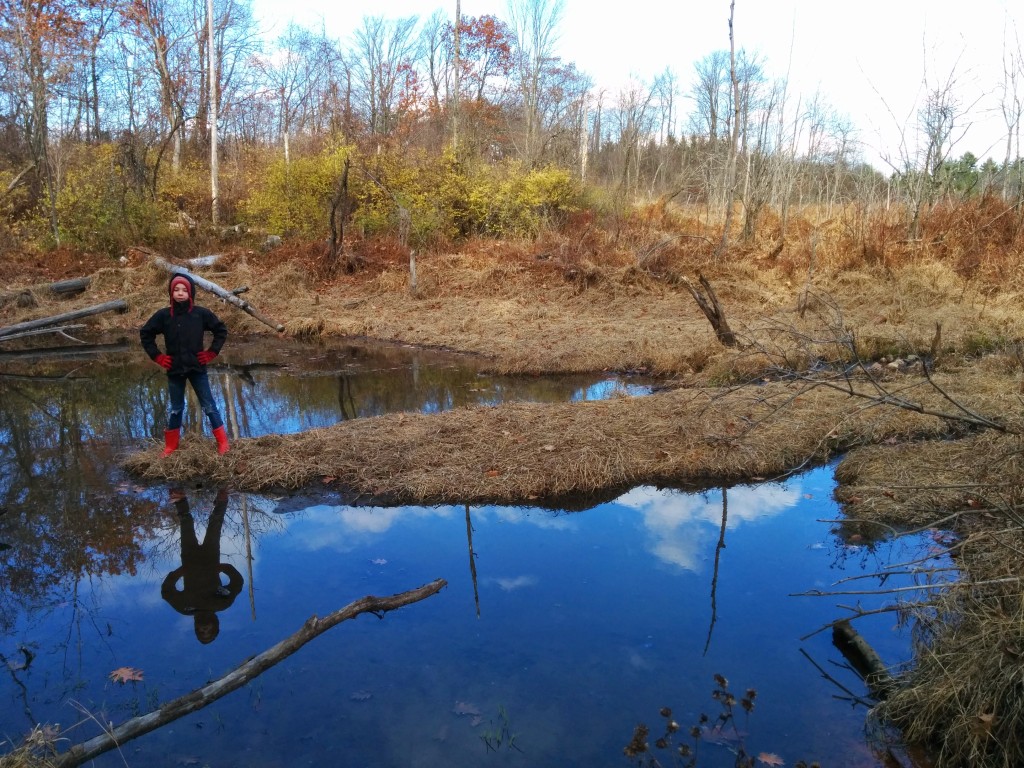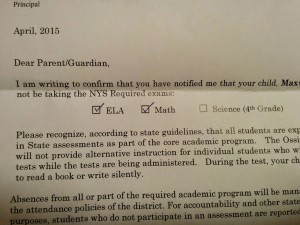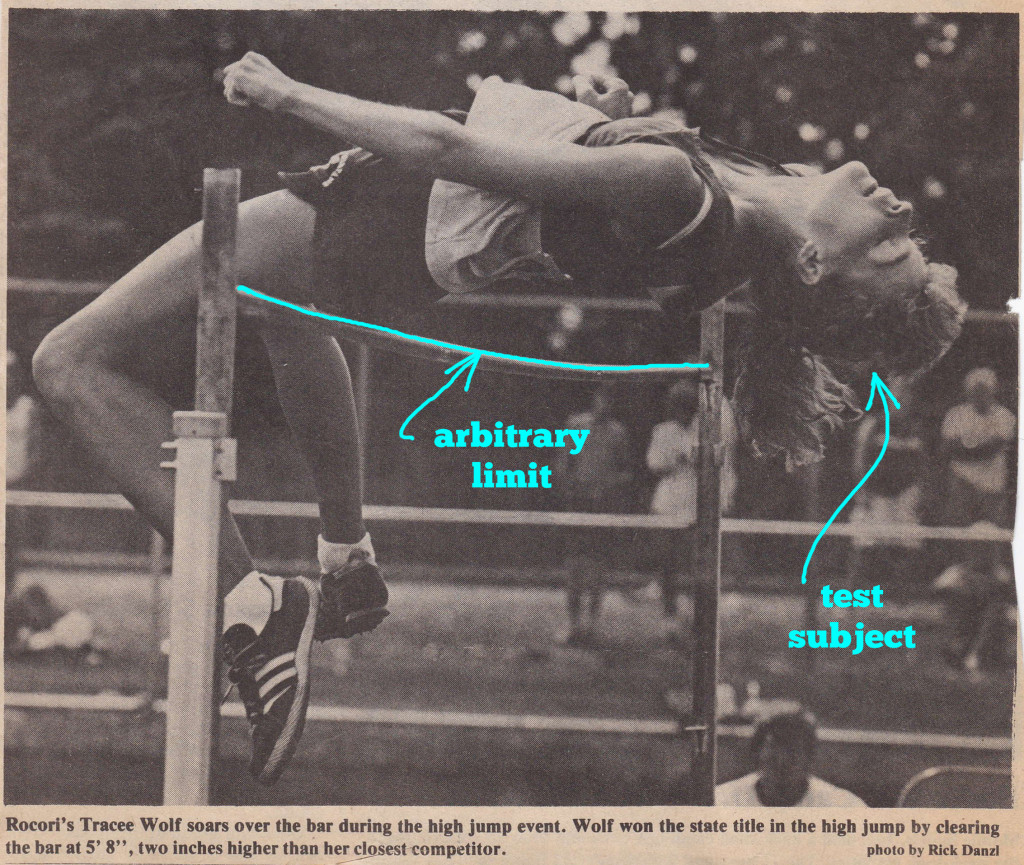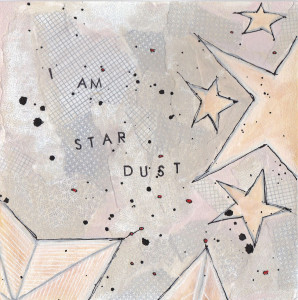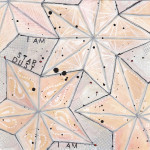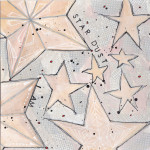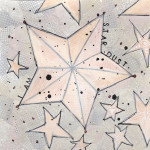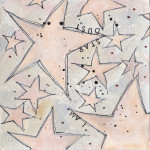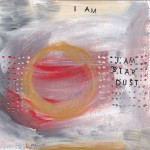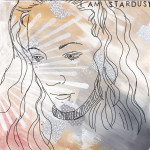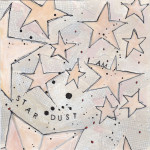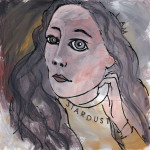I made a mistake the first time I ran ‘Stoke Your Creative Fire‘ online workshop: I told them they didn’t have to share their personal art making. I created a private online forum for people to share, but I also told them that what they were making was very personal and sharing was optional. Most people didn’t share. And I think that hurt them. It’s now time for some tough love.
Even though I still believe that your art making is and should be for yourself, and that you have to be careful who you share your personal stuff with, I’ve now reconsidered my policy on sharing. The benefits of sharing are staggering; significant enough to devise new approaches.
Benefits of Sharing your Work
Sharing your work is the ongoing journey that helps shape your creative voice. Without it, you don’t grow the way you otherwise would:
You become more accountable with yourself. It’s harder to be in denial about what you’re doing, feeling, wanting or trying to accomplish when you put something out there into the world for friends and perhaps even strangers to see. You try harder on behalf of yourself. You don’t half-ass it or you start to get much more clear that you are, in fact, half-assing it.
You raise your own bar. By putting your stuff out there, you are asserting a certain amount of conviction and overcoming excuses. You rise to the occasion and start aiming at your own standards because it’s so personal to you. I did this with the lunchnotes I make for my son’s lunch every day. I’ve done this for almost four years so far but only started posting them every day on Instagram. Since starting to post them, I’ve really upped my game. Recently my son (who rarely says much of anything) let me know how much the recent ones are so compelling to him. He’d love whatever I put in there, and I really try hard to create thoughtful pieces, but I have to admit that since posting them, I’ve notched it up and will continue to.
You become clearer about what you want and what motivates you. You can only copy other people for so long before you call yourself on it and then face the big question: what do *I* want???? And then you have to figure out how to say it in your art making. This forced clarity is really uncomfortable; if you don’t put it out there, you won’t face and move through your discomfort to discover what you really want.
You become stronger. When you share your art, you are taking calculated risks. Not everyone will understand what you’re doing or like what you’ve made. Some may decide to critique something that needs no critique. But by choosing to share, you increase your aptitude for courageous living, taking risks, being yourself and being able to face fears.
You find your creative voice. If you don’t share your work, you may be denying that you have a creative voice, or you’re not fully realizing your creative voice, or perhaps you’re embarrassed about not being in touch with your creative voice. Hiding from it doesn’t help you get in touch with it. Sharing it helps you find it.
You become well-positioned to share your creative voice in its fullest. Through regular sharing, it will eventually become salient that you are growing and changing. You will be able to see it in the quality of the things you’ve shared. At some point, you’ll be ready to really take ownership of the creative voice you’ve found in yourself and since you’ve been sharing all along, it won’t feel like any ordeal to reveal more of your voice. People will have become acclimated to what you share and when you finally hit stride with it, they’re ready for it just as you are. Plus, your truest friends will have cheered you on this whole time and they’ll be there to help you celebrate your creative voice.
You break out of bad habits. As much as we want the attributes listed above, many of us are still not willing to share. We still live in a culture where shame and shaming is pervasive: shame keeps us from doing what we really want and causes people to criticize others for who they are. However, with the techniques listed below, you break old patterns of comparison-mongering, negative self-feedback, shame and looking at the negative.
Self-Compassionate Ways to Share Your Art
Let’s say you make a piece of art that you’re not entirely happy with or that you filled with completely personal reflections. You’re not likely to want to share that. There are ways to share that allows one to partake in the benefits of sharing while maintaining privacy. You can ease into the benefits listed above by taking these semi-private approaches to sharing. Here are some self-compassionate ways to share your work:
Make it Hard to Read: 1. Scribble Write: You can write your reflections on the page in an illegible form. Who has to read them? Really? No one else needs to read them and nor really do you. It’s enough to write them even if you can’t read them. 2. Write super tiny. Most people won’t go through the work to read anything super tiny. 3. Write around in a circle. Again, too much work involved in trying to sort out any secrets.
The Cover Over You can write a stream of conscious writing on the page and then cover over it with paint or collage so that it’s not longer readable. You may decide to let certain words peek through but essentially the mood and intent is captured regardless of ability to see them.
Create a Feature Sometimes I’ll write something I’m thinking about on another sheet of paper and then integrate it somehow on the page: create a flap so you can close it (open the page to read it) or rip it up and collage the pieces into the page so only snippets can be seen
Put the Writing Within the Image You can tuck words in shadows, between lines, in foliage, anywhere where it will visually appear to be texture at first glance. Basically look for hiding places. It also makes the art more mysterious and rich.
Subsection-share When you take a picture of your art to share in social media, just take a picture of a selective section of it. Close-cropped photos always look fantastic anyway. Plus, the affect will make people more curious and appreciate that you’re not an open book.
So, my new policy is that you should share what you make. This is the path toward finding your creative voice and give you the self-recognition that you are a truly creative soul.
